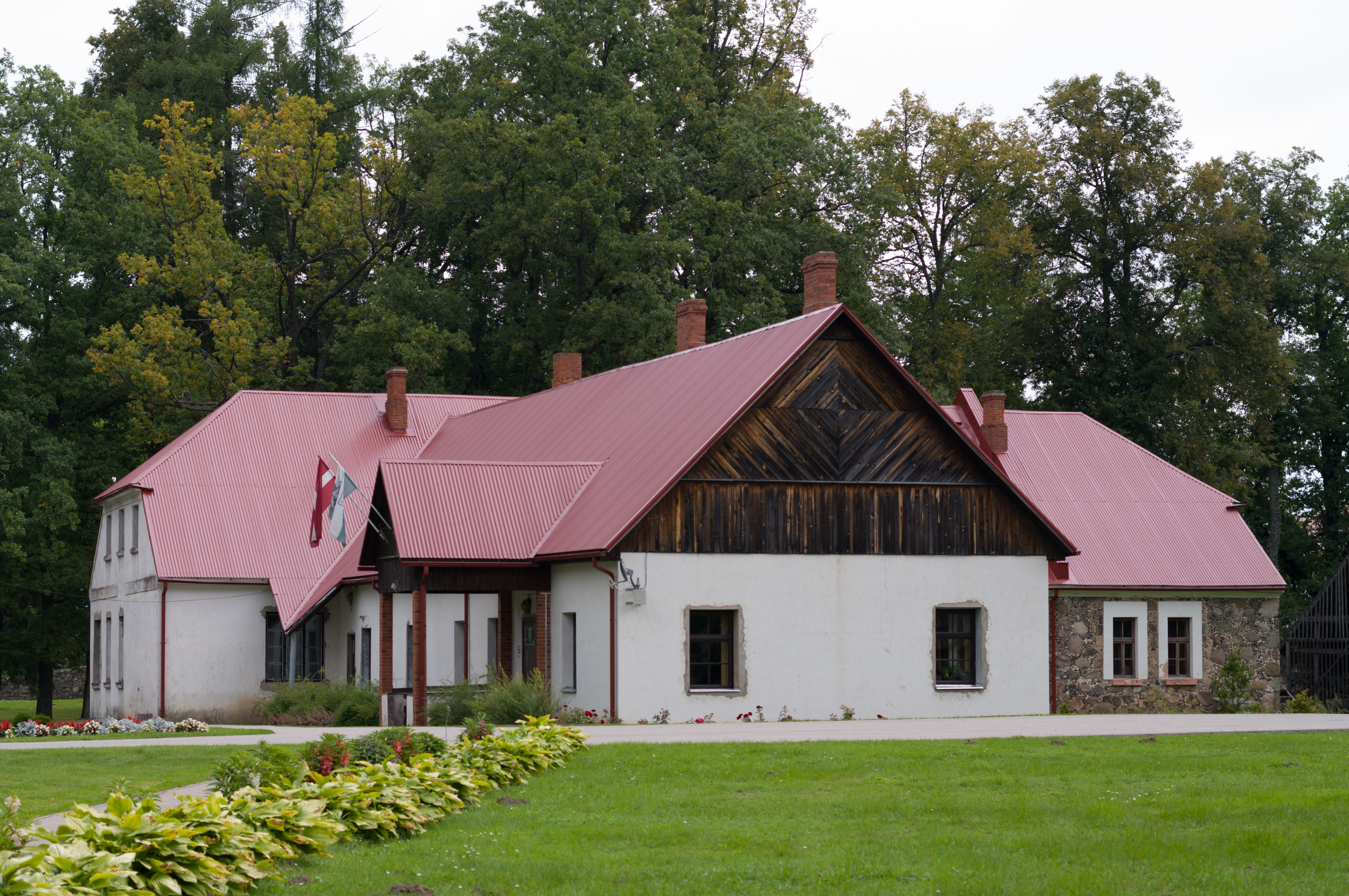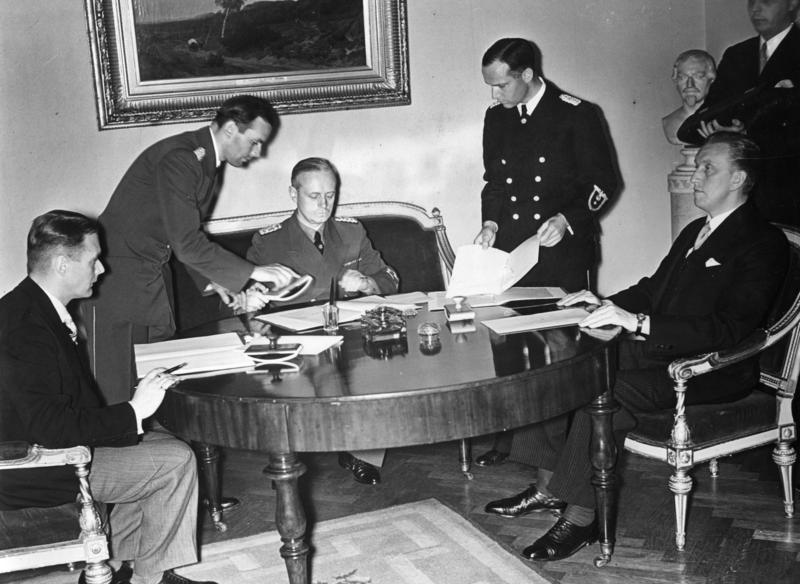|
Litene
Litene (german: Lettin) is the center of Litene Parish, in Gulbene Municipality, in north-eastern Latvia. Other names: Lytene, Myza Lytene.No NKVD līdz KGB. Politiskās prāvas Latvijā 1940–1986: Noziegumos pret padomju valsti apsūdzēto Latvijas iedzīvotāju rādītājs Latvijas Universitātes, Latvijas vēstures inst.; Red.: R. Vīksnes, K. Kanger; Sast.: Dz. Ērglis, R. Vīksne, A. Žvinklis, S. Boge.— Rīga, 1999.— XVIII, 975 lpp. In the spring of 1941, units of the disbanded Latvian Army now called the 24th Territorial Corps of the Red Army were sent for summer training to the former Latvian Army base at Litene. On 14 June 1941, the remaining officers, while on a supposed training mission, were disarmed, arrested and deported to forced labor at Norillag, north of the Arctic Circle in Siberia, where they were sentenced to death or long-term imprisonment. In 1988, excavation was undertaken at the former Latvian Army summer camp in Litene. The excavators uncovered ... [...More Info...] [...Related Items...] OR: [Wikipedia] [Google] [Baidu] |
Litene Manor, 2013, 1
Litene (german: Lettin) is the center of Litene Parish, in Gulbene Municipality, in north-eastern Latvia. Other names: Lytene, Myza Lytene.No NKVD līdz KGB. Politiskās prāvas Latvijā 1940–1986: Noziegumos pret padomju valsti apsūdzēto Latvijas iedzīvotāju rādītājs Latvijas Universitātes, Latvijas vēstures inst.; Red.: R. Vīksnes, K. Kanger; Sast.: Dz. Ērglis, R. Vīksne, A. Žvinklis, S. Boge.— Rīga, 1999.— XVIII, 975 lpp. In the spring of 1941, units of the disbanded Latvian Army now called the 24th Territorial Corps of the Red Army were sent for summer training to the former Latvian Army base at Litene. On 14 June 1941, the remaining officers, while on a supposed training mission, were disarmed, arrested and deported to forced labor at Norillag, north of the Arctic Circle in Siberia, where they were sentenced to death or long-term imprisonment. In 1988, excavation was undertaken at the former Latvian Army summer camp in Litene. The excavators uncovered ... [...More Info...] [...Related Items...] OR: [Wikipedia] [Google] [Baidu] |
Litene Manor
Litene Manor ( lv, Litenes muižas pils) is a manor house in Litene parish, in the historical region of Vidzeme, in northern Latvia. It was built during the first half of the 19th century in Classical style for Baron Otto von Wolff on the banks of the Pededze The Pededze ( et, Pedetsi jõgi) is a river in Latvia and Estonia. It has a length of of which 131 km runs through Latvia and 26 km through Estonia . It flows generally south. It is a right tributary of the Aiviekste, the source of P .... Manor was burned down during revolution of 1905 but was later restored in simplified forms. After Latvian agrarian reforms in 1921 manor house was nationalized and lands partitioned. Since 1924 building houses the Litene primary school. See also * List of palaces and manor houses in Latvia References Manor houses in Latvia Gulbene Municipality {{Latvia-castle-stub ... [...More Info...] [...Related Items...] OR: [Wikipedia] [Google] [Baidu] |
Litene Parish
Litene Parish () is situated in Gulbene Municipality, Latvia. It was an administrative unit of Gulbene District. The administrative center is Litene Litene (german: Lettin) is the center of Litene Parish, in Gulbene Municipality, in north-eastern Latvia. Other names: Lytene, Myza Lytene.No NKVD līdz KGB. Politiskās prāvas Latvijā 1940–1986: Noziegumos pret padomju valsti apsūdzēto L .... Territory - 127 km² Population (01.01.2005) - 1,250. Inhabited places - Atpūtas, Aurova, Fabrikas, Kordona, Lešķi, Litene, Silava, Silenieki, Skujenieki, Zāģernieki. Rivers - Apkārtupe, Dzirla, Gludupīte, Kaugurupīte, Lekšupe, Mugurupe, Pededze, Sita. Lakes - Kalnis, Kauguru ezers. References External links Parishes of Latvia Gulbene Municipality {{vidzeme-geo-stub ... [...More Info...] [...Related Items...] OR: [Wikipedia] [Google] [Baidu] |
Gulbene Municipality
Gulbene Municipality ( lv, Gulbenes novads) is a municipality in Vidzeme, Latvia. The municipality was formed in 2009 by merging Beļava parish, Dauksti parish, Druviena parish, Galgauska parish, Jaungulbene parish, Lejasciems parish, Litene parish, Lizums parish, Līgo parish, Ranka parish, Stāmeriena parish, Stradi parish, Tirza parish and Gulbene town the administrative centre being Gulbene. The population in 2020 was 19,771. Images Gulbenes novads karte.png, Boundaries of the municipality from 2009 to 2021 Gulbene raudteejaam 11.JPG, Gulbene Stameriena manor 2013 02.jpg, Stāmeriena Litene Manor, 2013, 3.jpg, Litene Jaungulbene Manor, 2013, 1.jpg, Jaungulbene See also * Administrative divisions of Latvia (2009) The current administrative division of Latvia came into force on 1 July 2021. On 10 June 2020, the Saeima approved a municipal reform that would reduce the 110 municipalities and nine republic cities to 43 local government units consisting of 36 ... R ... [...More Info...] [...Related Items...] OR: [Wikipedia] [Google] [Baidu] |
Soviet Occupation Of Latvia In 1940
The Soviet occupation of Latvia in 1940 refers to the military occupation of the Republic of Latvia by the Soviet Union under the provisions of the 1939 Molotov–Ribbentrop Pact with Nazi Germany and its Secret Additional Protocol signed in August 1939. The occupation took place according to the European Court of Human Rights,European Court of Human Rights cases on Occupation of Baltic States the Government of Latvia,The Occupation of Latvia at Ministry of Foreign Affairs of the Republic of Latvia the , [...More Info...] [...Related Items...] OR: [Wikipedia] [Google] [Baidu] |
Military Of Latvia
The Latvian National Armed Forces ( lv, Latvijas Nacionālie bruņotie spēki), or NBS, are the armed forces of Latvia. Latvia's defense concept is based on a mobile professional rapid response force and reserve segment that can be called upon relatively fast for mobilization should the need arise. The National Armed Forces consists of Land Forces, Naval Forces, Air Force and National Guard. Its main tasks are to protect the territory of the State; participate in international military operations; and to prevent threats to national security. Mission The mission of the National Armed Forces (NAF) is to defend the sovereignty and territorial integrity of the nation and to defend its population against foreign or domestic armed aggression. In order to implement these tasks, the NAF provide for the defence of the nation, its air space and national territorial waters, participate in large scale crisis response operations, perform emergency rescue operations, and participate in internat ... [...More Info...] [...Related Items...] OR: [Wikipedia] [Google] [Baidu] |
Pēteris Vasks
Pēteris Vasks (born 16 April 1946) is a Latvian composer. Biography Vasks was born in Aizpute, Latvia, into the family of a Baptist pastor. He trained as a violinist at the Jāzeps Vītols Latvian Academy of Music, as a double-bass player with Vitautas Sereikaan at the Lithuanian Academy of Music and Theatre, and played in several Latvian orchestras before entering the State Conservatory in Vilnius in the neighboring Lithuania to study composition with Valentin Utkin, as he was prevented from doing this in Latvia due to Soviet repressive policy toward Baptists. He started to become known outside Latvia in the 1990s, when Gidon Kremer started championing his works and now is one of the most influential and praised European contemporary composers. Vasks' early style owed much to the aleatoric experiments of Witold Lutosławski, Krzysztof Penderecki and George Crumb. Later works included elements of Latvian folk music, such as his gentle and pastoral cor anglais concerto (1989) ... [...More Info...] [...Related Items...] OR: [Wikipedia] [Google] [Baidu] |
NKVD Prisoner Massacres
The NKVD prisoner massacres were a series of mass executions of political prisoners carried out by the NKVD, the People's Commissariat for Internal Affairs of the Soviet Union, across Eastern Europe, primarily Poland, Ukraine, the Baltic states, and Bessarabia. After the start of the German invasion of the Soviet Union on June 22, 1941, the NKVD troops were supposed to evacuate political prisoners into the interior of the Soviet Union, but the hasty retreat of the Red Army, the lack of transportation and other supplies and the general disregard for legal procedures often meant that the prisoners were executed. Estimates of the death toll vary between locations; nearly 9,000 in the Ukrainian SSR, 20,000–30,000 in eastern Poland (now part of Western Ukraine), with the total number reaching approximately 100,000 victims of extrajudicial executions in the span of a few weeks.Robert Gellately. ''Lenin, Stalin, and Hitler: The Age of Social Catastrophe.'' Knopf, 2007 p. 391 Backgro ... [...More Info...] [...Related Items...] OR: [Wikipedia] [Google] [Baidu] |
Katyn Massacre
The Katyn massacre, "Katyń crime"; russian: link=yes, Катынская резня ''Katynskaya reznya'', "Katyn massacre", or russian: link=no, Катынский расстрел, ''Katynsky rasstrel'', "Katyn execution" was a series of mass executions of nearly 22,000 Polish military officers and intelligentsia prisoners of war carried out by the Soviet Union, specifically the NKVD ("People's Commissariat for Internal Affairs", the Soviet secret police) in April and May 1940. Though the killings also occurred in the Kalinin and Kharkiv prisons and elsewhere, the massacre is named after the Katyn Forest, where some of the mass graves were first discovered by German forces. The massacre was initiated in NKVD chief Lavrentiy Beria's proposal to Joseph Stalin to execute all captive members of the Polish officer corps, which was secretly approved by the Soviet Politburo led by Stalin. Of the total killed, about 8,000 were officers imprisoned during the 1939 Soviet invasion o ... [...More Info...] [...Related Items...] OR: [Wikipedia] [Google] [Baidu] |
Mass Graves In The Soviet Union
In July 2010, a mass grave was discovered next to the Peter and Paul Fortress in St. Petersburg, containing the corpses of 80 military officers executed during the Red Terror of 1918–1921. By 2013 a total of 156 bodies had been found in the same location. At about the same time a mass grave from the Stalin period was discovered at the other end of the country in Vladivostok. These and later mass graves in the Soviet Union were used to conceal the large numbers of Soviet citizens and foreigners executed by the Bolshevik regime under Vladimir Lenin and Joseph Stalin. Indiscriminate mass killings began in January 1918 during the Russian Civil War (1918-1922) as the Bolsheviks launched their Red Terror. After the upheavals of the First Five-Year Plan (1928-1932) the killings reached a peak in the Great Terror of 1937–1938. At all times they were directed and carried out by the Soviet secret police under its changing titles: the Cheka during the Civil War, the OGPU during for ... [...More Info...] [...Related Items...] OR: [Wikipedia] [Google] [Baidu] |
Political Repression In The Soviet Union
Throughout the history of the Soviet Union, tens of millions of people suffered political repression, which was an instrument of the state since the October Revolution. It culminated during the Stalin era, then declined, but it continued to exist during the "Khrushchev Thaw", followed by increased persecution of Soviet dissidents during the Brezhnev era, and it did not cease to exist until late in Mikhail Gorbachev's rule when it was ended in keeping with his policies of glasnost and perestroika. Origins and early Soviet times Secret police had a long history in Tsarist Russia. Ivan the Terrible used the Oprichina, while more recently the Third Section and Okrhana existed. Early on, the Leninist view of the class conflict and the resulting notion of the dictatorship of the proletariat provided the theoretical basis of the repressions. Its legal basis was formalized into the Article 58 in the code of Russian SFSR and similar articles for other Soviet republics. At times, th ... [...More Info...] [...Related Items...] OR: [Wikipedia] [Google] [Baidu] |





